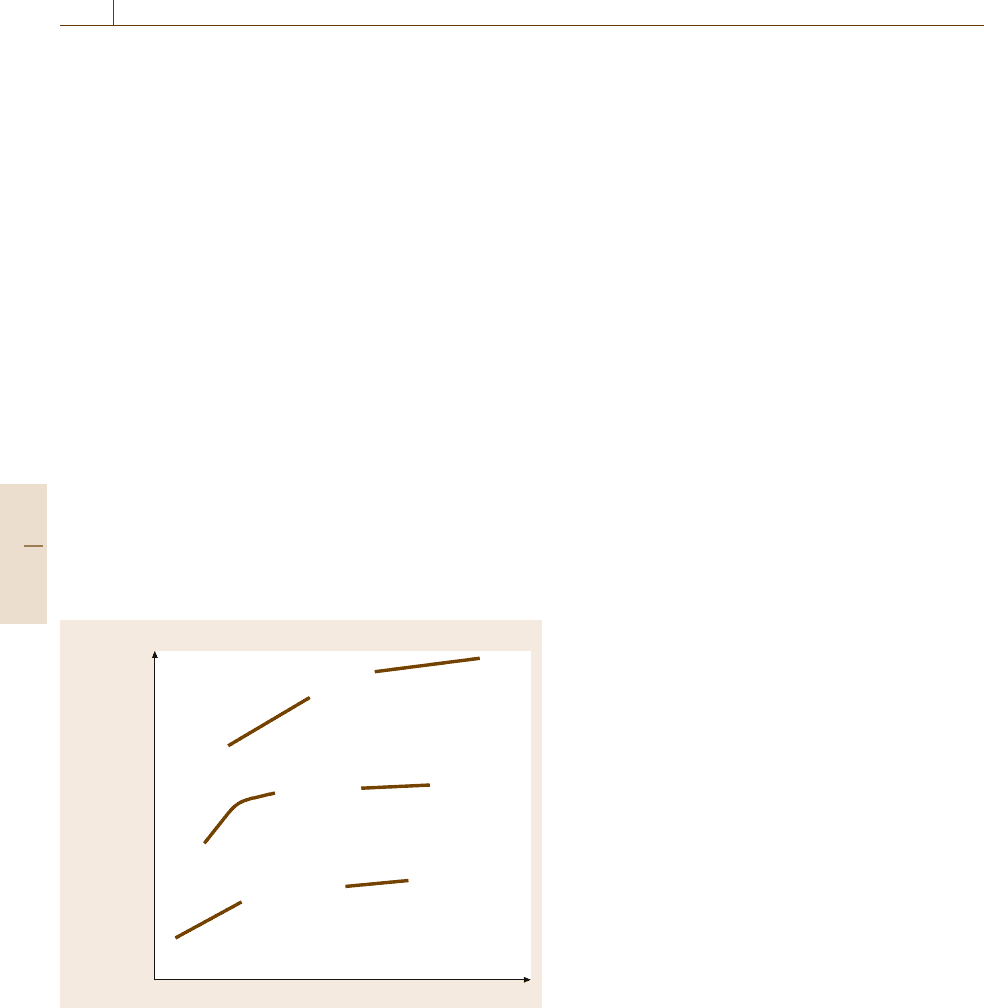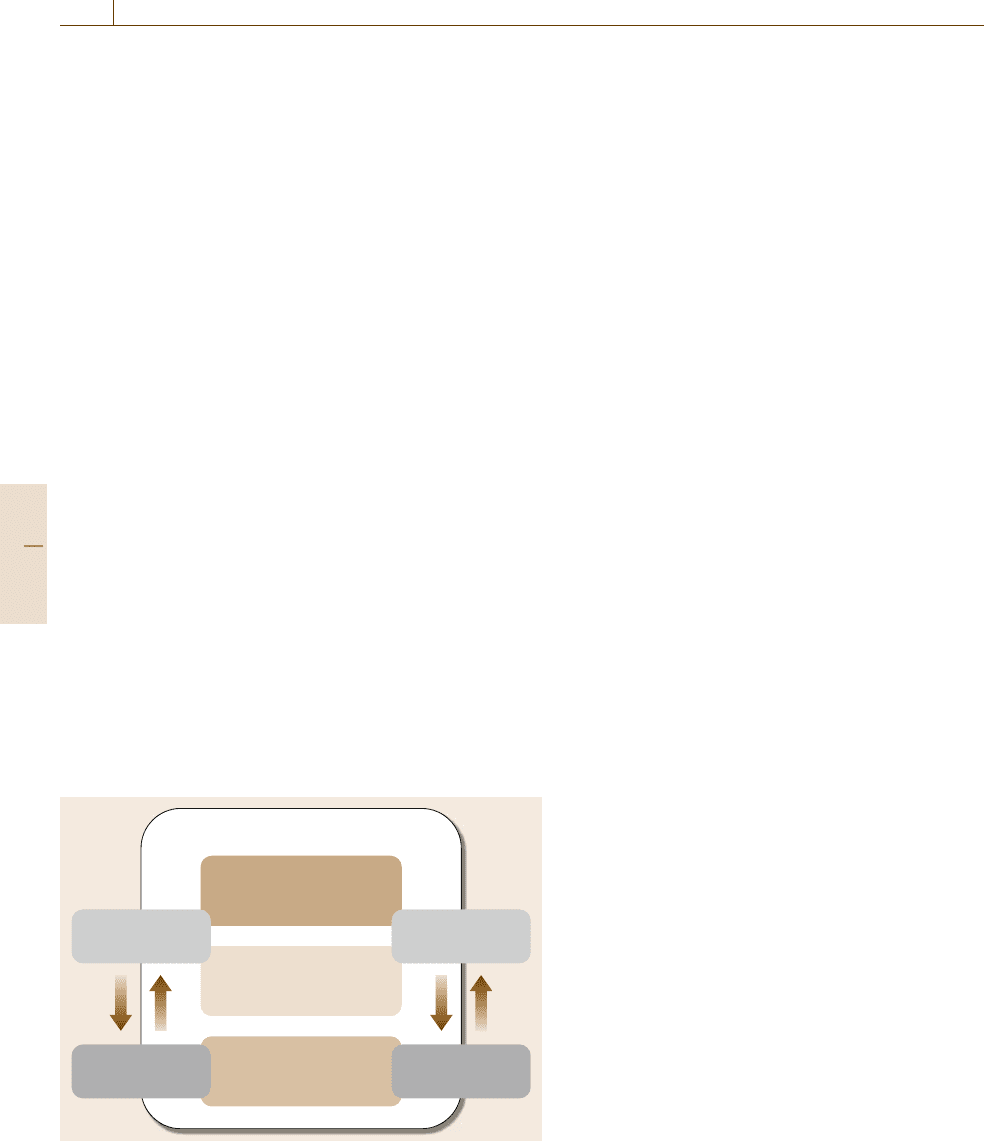Nof S.Y. Springer Handbook of Automation
Подождите немного. Документ загружается.


Automation in Education/Learning Systems References 1525
85.13 R.M. Gagne, L.J. Briggs: Principles of Instructional
Design, 2nd edn. (Holt Rinehart Winston, Geneva
1979)
85.14 K. Akahori: A hierarchical structuring method of
learning tasks for instructional design, J. Jpn. CAI
Assoc. 7(3), 99–107 (1990), in Japanese
85.15 C.M. Reigeluth: Instructional Design Theories and
Models: An Overview of Their Current Status
(Lawrence Erlbaum, Andover 1983)
85.16 R. Rickey: The Theoretical and Conceptual Bases of
Instructional Design (Kogan Page, London 1986)
85.17 R.M. Gagne, L.J. Briggs: Principles of Instructional
Design (Holt Rinehart Winston, London 1974)
85.18 C.M. Reigeluth, M.D. Merrill, C.V. Bunderson: The
structure of subject matter contents and its in-
structional design implications, Instruct. Sci. 7,
107–126 (1978)
85.19 C.M. Reigeluth, M.D. Merrill, B.G. Wilson,
R.T. Spiller: The elaboration theory of instruc-
tion: a sequencing and synthesizing instruction,
Instruct. Sci. 9, 195–219 (1980)
85.20 M.D. Merrill: Component display theory. In: In-
structional Design Theories and Models,ed.
by C.M. Reigeluth (Lawrence Erlbaum, Hillsdale
1983)
85.21 T. Sato: A Sequencing and Synthesizing Instruction
by Interpretive Structural Modeling (Meiji Tosyo,
Tokyo 1987), in Japanese
85.22 J.M. Keller, K. Suzuki: Learner motivation and
e-Learning design: a multinationally validated
process, J. Educ. Media 29(3), 229–239 (2004)
85.23 K. Suzuki, A. Nishibuchi, M. Yamamoto, J.M. Keller:
Development and evaluation of website to check
instructional design based on the ARCS motiva-
tion model, Inf. Syst. Educ. 2(1), 63–69 (2004), in
Japanese
85.24 J.C. Dunlap, R.S. Grabiger: Rich environments for
active learning in the higher education classroom.
In: Constructivist Learning Environments: Case
Studies in Instructional Design, ed. by B.G. Willson
(Educational Technology Publications, Englewood
Cliffs 1996)
85.25 R.C. Shank, T.R. Berman, K.A. Macpherson: Learn-
ing by doing. In: Instructional-Design Theories and
Models: A New Paradigm of Instructional Theory,
Vol. II, ed. by C.M. Reigeluth (Lawrence Erlbaum,
Andover 1999)
85.26 J. Nemoto, K. Suzuki: A checklist development for
an instructional design based on goal-based sce-
nario theory, Jpn. J. Educ. Technol. 29(3), 309–318
(2005), in Japanese
85.27 S.N. Hendrickson: Learning in context interactive
scenario design, paper presented at Techknowlege,
Las Vegas (2005)
85.28 N. Dabbagh: Schaffolding: An important teacher
competency in online learning, Technol. Trends
47(2), 39–44 (2003)
85.29 C.N. Gunawardena, F.J. Zittle: Social presence as
a predictor of satisfaction within a computer-
mediated conferencing environment, Am. J. Dis-
tance Educ. 1(7), 8–26 (1997)
85.30 D.R. Garrison, T. Anderson: e-Learning in the 21st
Century: A Framework for Research and Practice
(Routledge-Falmer, London New York 2003)
85.31 P.A. Shea Pickett, W. Pelz: Enhancing student
satisfaction through faculty development: The im-
portance of teaching presence. In: Elements of
Quality Online Education: Into the Mainstream,
Sloan-C Ser., Vol. 5, ed. by J. Bourne, J.C. Moore
(Sloan Center for Online Education, Needham
2003), CD-ROM, http://www.sloanconsortium.org/
elementsofquality_volume5_cd_ns (2009)
85.32 D.R. Garrison, M.C. Innes: Critical functions
in student satisfaction and success: facilitating
student rule adjustment in online commu-
nications of inquiry. In: Elements of Quality
Online Education: Into the Mainstream,Sloan-
C Ser., Vol. 5, ed. by J. Bourne, J.C. Moore
(Sloan Center for Online Education, Needham
2003), CD-ROM, http://www.sloanconsortium.org/
elementsofquality_volume5_cd_ns (2009)
85.33 A.M.A. Sperlich, K. Spraul: Students as active part-
ners: higher education management in Germany,
Public Sect. Innov. J. 12(3), 2–19 (2007)
85.34 O. Simpson: Student Retention on Online, Open
Distance Learning (Kogan Page, London 2003)
85.35 T. Matsuda, N. Honna, H. Kato: Development
of e-Mentoring guideline and its evaluation,
Jpn. J. Educ. Technol. 29(3), 239–250 (2005), in
Japanese
85.36 D.L. Kirkpatrick: Evaluating Training Program: The
Four Levels, 2nd edn. (Berrett-Koehler, San Fran-
cisco 1998)
85.37 W. Horton: Evaluating e-Learning (ATSD, Alexan-
dria 2001)
85.38 J.J. Phillips, R.D. Stone: How to Measure Training
Results: A Practical Guide to Tracking the Six Key
Indicators (McGraw-Hill, New York 2002)
85.39 M. Scriven: Evaluation perspectives and pro-
cedures. In: Evaluation in Education,ed.by
W.J. Popham (McCutchan, Berkeley 1974)
85.40 D. Walter, L. Garey, J.O. Carey: A Systematic Design
of Instruction (Addison-Wesley, Boston 2001)
85.41 P.L. Smith, J.R. Tillman: Instructional Design,2nd
edn. (Wiley, New York 1999)
85.42 L.M. Spencer, S.M. Spencer: Competence at Work
(Wiley, New York 1993)
85.43 K. Tamaki, M. Kosakai, T. Matsuda: e-Learning
Practice (Ohmsha, Tokyo 2002) p. 17, in Japanese
85.44 N. Harrison: How to Design Self-Directed and
Distance Learning: A Guide for Creators of
Web-Based Training, Computer-Based Training,
and Self-Study Materials (McGraw-Hill, New York
1998)
Part I 85

1526 Part I Home, Office, and Enterprise Automation
85.45 American Society for Training and Development:
Official homepage (2009),
http://www.astd.org/astd
85.46 B. Broadbent: ABCs of e-Learning: Reaping the
Benefits and Avoiding the Pitfalls (Wiley, New York
2002)
85.47 J.M. Rosenberg: e-Learning: Strategies for Deliv-
ering Knowledge in the Digital Age (McGraw-Hill,
New York 2001)
85.48 Japan e-Learning Consortium: 2006/2007 e-Learn-
ing White Paper (Tokyo Denki University Press,
Tokyo 2006), in Japanese
85.49 Brandon Hall Research: LMS and LCMS demysti-
fied – they sound similar, but they’re very differ-
ent (2008). http://www.brandon-hall.com/free_
resources/lms_and_lcms.shtml
85.50 Advanced Distributed Learning (ADL): Official hom-
page (2008). http://www.adlnet.gov/
85.51 Yale University: Official hompage (2008).
http://www.yale.edu/its/
85.52 Internet2 Middleware Initiative: The Shibboleth
System (2008). http://shibboleth.internet2.edu/
85.53 Aviation Industry CBT Committee (AICC): Official
hompage (2008). http://aicc.org/
85.54 IMS Global Learning Consortium: Official hompage
(2008). http://www.imsglobal.org/
85.55 IEEE Learning Technology Standards Committee:
Official hompage (2008). http://ieeeltsc.org/
85.56 Globe: Official hompage (2008).
http://globe.edna.edu.au/
85.57 M. Roy: Learning objects, EDUCAUSE Rev. 39(6), 80–
84 (2004)
85.58 Open Knowldege Inititiative: Official homepage
(2008). http://www.okiproject.org/
85.59 OECD-Centre for Educational Research and Inno-
vation: e-Learning in Tertiary Education: Where
Do We Stand? (Organization for Economics, Berlin
2005)
85.60 J. Slafer: Spent Force or Revolution in Progress?
e-Learning After the e-University (Oxford Higher
Education Policy Institute, Oxford 2005), sponsored
by webCT
85.61 R. Wingart: Classroom teaching changes in web-
enhanced courses: a multi-institutional study,
Educase Q. 27(1), 26–35 (2004)
85.62 e-Framework for Education and Research Initia-
tive: Official homepage (2008).
http://www.e-framework.org/
85.63 MIT: Official hompage (2008).
http://ocw.mit.edu/OcwWeb/
85.64 Elearningeuropa Initiative: Official hompage
(2008). http://www.elearningeuropa.info
85.65 SOCRATES: Official hompage (2008).
http://projectsocrates.org
85.66 Europe’s Information Society: Official hompage
(2008). http://ec.europa.eu/information_society/
eeurope/i2010/index_en.htm
85.67 eInclusion: Official hompage (2008).
http://www.einclusion-eu.org
85.68 T. Koschmann: CSCL: Theory and Practice of
an Emerging Paradigm (Computers, Cogni-
tion, and Work) (Lawrence Erlbaum, Andover
1996)
85.69 S. Mizuno: Company-wide quality control activi-
ties in Japan, Rep. Stat. Appl. Res. JUSE 16(3), 8–18
(1969)
85.70 Japan Institute of Plant Maintenance (JIPE) (Ed.):
TPM for Every Operator, Shop Floor Series (Produc-
tivity, Tokyo 1996)
85.71 Y. Sugimori, K. Kusunoki, F. Cho: Toyota production
system and Kanban system, Int. J. Prod. Res. 15,
553–565 (1977)
85.72 T. Ohno: Toyota Production System – Beyond
Large-Scale Production (Productivity, Portland
1988)
85.73 I. Nonaka, P. Byosiere, C.C. Borucki, N. Konno:
Organizational knowledge creation theory: a first
comprehensive test, Int. Bus. Rev. 3(4), 337–352
(1994)
85.74 K. Tamaki: Development of e-Learning educational
programs for cyber manufacturing in management
of technology (MOT), Proc. 18th Int. Conf. Prod. Res.
(2005)
85.75 Working Group for Cyber Manufacturing: Cyber
Manufacturing, Aoyama Media Lab (AML) Project
(Research Center of Aoyama Gakuin University,
Tokyo 2004), in Japanese
85.76 J. Bersin: TheBlendedLearningBook:BestPrac-
tice, Proven Methodologies, and Lessons Learned
(Pfeiffer, Somerset 2004)
85.77 P.L. Smith, T.J. Ragan: Instructional Design,3rd
edn. (Wiley, New York 2005)
85.78 North Central Regional Educational Laboratory
(NCREL): Glossary of education terms and acronyms
(2008).
http://www.ncrel.org/sdrs/areas/misc/glossary.htm
85.79 J. Orlicky: Material Requirements Planning (Mc-
Graw Hill, New York 1975)
85.80 K. Sheikh: Manufacturing Resource Planning
(MRP II) With Introduction to ERP, SCM, and CRM
(McGraw Hill, New York 2001)
85.81 Myreshka, K. Takahashi: e-Learning in Produc-
tion Planning (MRP), Cyber Manufacturing, AML
Project (Research Center of Aoyama Gakuin Uni-
versity, Aoyama 2004), in Japanese
85.82 A. Shikida: A new learning design for creative
learningsbythecircuitmodel,J.Jpn.Soc.Eng.
Educ. 53(1), 35–40 (2005), in Japanese
85.83 K.E. Stecke, N. Raman: FMS planning deci-
sions, operating flexibilities, and system per-
formance, IEEE Trans. Eng. Manag. 42(1), 82–90
(1995)
85.84 New Technology Systems: The Manual for
V-FMS21 Simulation Software
(New Technology
Part I 85

Automation in Education/Learning Systems References 1527
Systems, Tokyo 2006), http://www.nets-sys.com,
in Japanese
85.85 L.S. Vygotsky: Mind in Society (Harvard University
Press, Cambridge 1978)
85.86 J. Lave, E. Wenger: Situated Learning: Legitimate
Peripheral Participation (Cambridge Univ. Press,
Singapore 1991)
85.87 M.J. Rosenberg: Beyond e-Learning: Approaches
and Technologies to Enhance Knowledge, Learning
and Performance (Pfeiffer, Somerset 2006)
85.88 N. Lin: Social Capital: A Theory of Social Structure
and Action, Structural Analysis in the Social Sci-
ences, Vol. 19 (Cambridge Univ. Press, Singapore
2002)
85.89 D. Halpern: Social Capital (Polity, Cambridge 2005)
85.90 L. Prusak (Ed.): Knowledge in Organizations
(Butterworth-Heinemann, London 1997)
85.91 L.H. Thurow: Fortune Favors the Bold – What We
Must Do to Build a New and Lasting Global Pros-
perity (Harper Collins, New York 2003)
85.92 L.S. Paine: Value Shift (McGraw-Hill, New York
2003)
85.93 K. Ishii, T. Ichimura, S. Kondoh, S. Hiraki: A frame-
work for the management system model to create
new value of business output, Int. J. Entrep. Innov.
Manag. 4(4), 393–406 (2004)
85.94 C.K. Prahalad, V. Ramaswamy: The Future of Com-
petition: Co-Creating Unique Value with Customers
(Harvard Business School Press, Boston 2004)
85.95 B. Trezzini, P. Lambe, S. Hawamdeh (Eds.): People,
knowledge and technology: what have we learnt
so far?, Proc. 1st iKMS Int. Conf. Knowl. Manag.
(World Scientific, 2004)
85.96 S. Alikhan, R. Mashelkar: Intellectual Property and
Competitive Strategies in the 21st Century (Kluwer,
Dordrecht 2004)
85.97 R.F. Reilly, R.P. Schweihs: The Handbook of Busi-
ness Valuation and Intellectual Property Analysis
(McGraw-Hill, New York 2004)
85.98 Y. Monden, K. Miyamoto, K. Hamada, G. Lee,
T. Asada: Value-Based Management of the Rising
Sun (World Scientific, Hackensack 2006)
85.99 Second Life: Official homepage (2008),
http://secondlife.com/
Part I 85
“This page left intentionally blank.”

1529
Enterprise Int
86. Enterprise Integration and Interoperability
François B. Vernadat
Enterprise integration and interoperability deal
with facilitating communication, cooperation,
and collaboration within an organization, be it
a single organization or a networked organi-
zation, or be it a public or a private organiza-
tion. This chapter first defines enterprise in-
tegration and systems interoperability and
presents relevant architectural frameworks. It
then explains the technical, semantic, and orga-
nizational dimensions of interoperability before
presenting essential standards and technology
for interoperability and integration. Applica-
tions and future trends are pointed out before
concluding.
86.1 Definitions and Background ..................1530
86.1.1 Enterprise Integration................. 1530
86.1.2 Systems Interoperability.............. 1531
86.1.3 Background ............................... 1531
86.2 Integration
and Interoperability Frameworks ...........1532
86.2.1 Technical Interoperability............ 1532
86.2.2 Semantic Interoperability............ 1533
86.2.3 Organizational Interoperability ....1533
86.3 Standards and Technology
for Interoperability...............................1533
86.4 Applications and Future Trends..............1535
86.5 Conclusion ...........................................1537
References ..................................................1537
Market globalization, worldwide competition, and fast
changing business conditions are forcing enterprises to
become more agile but also to increase communication,
collaboration, and networking with suppliers, partners
or distributors.
Enterprise integration and interoperability come
into play any time that two or more business entities
need to work together or need to share the same infor-
mation. A business entity is any part of an enterprise.
It can be of any size, ranging from a single worksta-
tion or an information technology (IT) system (e.g.,
a post in a department or an enterprise resource plan-
ning (ERP) system module) to a full organization unit
made up of people, systems, different pieces of equip-
ment, information stores, etc. In fact, it can even be any
node in a supply-chain network or any component of an
extended or virtual enterprise.
The need for enterprise integration, and for underly-
ing systems interoperability, results from the increasing
need to interconnect and seamlessly operate technical,
social, and information systems of geographically dis-
persed enterprises or of different enterprises working
together. This concerns the internal business pro-
cesses and services of a given enterprise as well as
cross-organizational business processes spanning part-
ner companies or networks of enterprises.
The challenge of integrating enterprise systems or
business entities comes from the large number and high
heterogeneity of enterprise components that are sub-
ject to be interconnected. When two systems have to
talk to each other or interoperate, they have to agree
on common message formats, transfer protocols, shared
(data) semantics, security and identification aspects,
etc. For instance, if a bank and an insurance company
want to jointly offer real-estate loans with life insur-
ance, they have to align their customer data files, agree
on loan acceptance conditions and rules, and coordi-
nate respective local services (loan request processing,
loan approval/refusal, insurance condition setting, etc.)
into a common business process to offer a composite
service.
In this chapter, both enterprise integration and
interoperability are defined, respective architectural
frameworks are presented and the underlying tech-
Part I 86

1530 Part I Home, Office, and Enterprise Automation
nologies are discussed from a three-level perspective
(technical, application/semantic, and organizational di-
mensions). Finally, future trends are discussed before
concluding.
86.1 Definitions and Background
Enterprise integration and systems interoperability aim
at facilitating communication, cooperation, and col-
laboration between business entities. While enterprise
integration has a strong organizational dimension, in-
teroperability is more of a technical nature.
86.1.1 Enterprise Integration
Enterprise integration (EI) occurs when there is a need
to remove organizational barriers and/or improving
interactions among people, systems, applications, de-
partments, and companies (especially in terms of
material flows, information/decision flows, and control
or work flows) [86.1,2]. The goal is to create synergy,
i.e., the integrated system offers more capability than
the sum of its components.
The complexity of EI relies on the fact that enter-
prises typically comprise hundreds, if not thousands, of
CIM/EI integration level
CIM/EI evolution
Coordination/
collaboration
Cooperation
Communication
Business
integration
Application
integration
Physical system
integration
Extended enterprise/virtual organization
Enterprise architectures enterprise portals CSCW
Organization & human aspects/BP coordination BPMN
Service orchestration Workflow BEPL EDM/WCM
EDI/EDIFACT STEP ebXML RosettaNet
SQL/xPath KQML/KIF RDF/OWL WSDL
Web services MOM/ESB Service registries UDDI
FTP, SMTP, HTTP .Net/J2EE HTML/XML SOAP
ISO-OSI TCP/IP ASI ATM Fast ethernet
Fig. 86.1 Enterprise integration levels and related technologies (es-
sential technical terms and acronyms appearing in the figure are
explained in Sect. 86.3 of this chapter and more information on
each of them can be found at http://whatis.techtarget.com)(FTP –
file transfer protocol, ISO-OSI – International Standards Organiza-
tion Open System Interconnection, ATM – asynchronous transfer
mode, J2EE – Java to Enterprise Edition, ASI – actuator sensor
interface)
applications (be they packaged solutions, custom-built
or legacy systems), some of them being remotely lo-
cated and support an even larger number of business
processes. This environment gets even more compli-
cated as companies these days are increasingly involved
in merger, fusion, acquisition, divestiture, and partner-
ship opportunities.
Integration of enterprise activities has long been,
and often still is, considered as a pure IT problem.
While it is true that at the end of the day the prime chal-
lenge of EI is to provide the right information to the
right place at the right time, business integration needs
must drive information system integration and not vice
versa. EI therefore has a strong organizational dimen-
sion, in addition to its control/management dimension
and its technological dimension.
From a pure IT standpoint, EI mostly means
connecting computer systems and IT applications to
support business processoperations [86.3,4]. It involves
technologies such as enterprise portals, data replication,
shared business functions with remote method invo-
cation, enterprise service buses, distributed business
processes (or workflow systems), and business-to-
business (B2B) integration.
From an organizational standpoint, EI is concerned
with facilitating information, control, and material
flows across organization boundaries by connecting
all the necessary functions and heterogeneous func-
tional entities (e.g., information systems, devices,
applications, and people) in order to improve com-
munication (data and information exchanges at system
level), cooperation (interoperation at application level),
and coordination or collaboration (timely orchestra-
tion of process steps at business level) within this
enterprise so that it behaves as an integrated whole
(Fig.86.1) [86.1, 5]. It will therefore enhance overall
productivity, flexibility, and capacity for the manage-
ment of change (i.e., agility). Li and Williams [86.6]
provide a broader definition of EI stating that en-
terprise integration is the coordination of all el-
ements including business, processes, people, and
technology of the enterprise(s) working together in
order to achieve the optimal fulfillment of the busi-
ness mission of that enterprise(s) as defined by the
management.
Part I 86.1

Enterprise Integration and Interoperability 86.1 Definitions and Background 1531
Enterprise integration can apply vertically or hor-
izontally within any organization. Vertical integration
refers to integration of a line of business from its
top management down to its tactical planning and
operational levels (i.e., along the control structure).
Horizontal integration refers to integration of the var-
ious domains (i.e., business areas) of the enterprise or
with its partners and market environment (i.e., alongthe
supply/consumer chain structure).
Integration can range from loosely coupled to
tightly coupled and further to full system integration.
Full integration means that component systems are no
longer distinguishable in the whole integrated system.
Tightly coupled integration means that components are
still distinguishable in the whole but any modifica-
tion to one of them may have direct impact on others.
Loosely coupled integration means that component sys-
tems continue to exist on their own but can also work as
components of the integrated system.
Putting in place interoperable enterprise systems is
essential to achieve enterprise integration with the level
of flexibility and agility required by public or private
organizations to cope with the need for frequent organi-
zational changes.
As indicated by Fig.86.1, reaching the successive
levels of integration requires building on a number of
standards, languages, and technologies. Standardiza-
tion efforts have been reviewed by Chen and Vernadat
in [86.7] (Sect.86.3).
86.1.2 Systems Interoperability
Interoperability is defined in the Webster dictionary as
“the ability of a system to use parts of another sys-
tem”. In IT terms, it can be defined as the ability of two
or more information systems and of business processes
they support to exchange data, share information and
knowledge, or use functionality of one another.
Another definition hasrecently been providedby the
Athena project [86.8]. It defines interoperability of en-
terprise applications as the ability of a system to work
with other systems without special effort on the part of
their users.
More broadly speaking, enterprise interoperability
can be defined as the ability of an enterprise to use in-
formation or services provided by one or more other
enterprises. This assumes on the part of the IT in-
frastructure the ability to send and receive messages
(requests or responses) or data streams. These ex-
changes can be made in synchronous or asynchronous
mode depending on communication needs.
Interoperability is indeed one of the many facets
of enterprise integration. An integrated family of sys-
tems must necessarily be interoperable in one form or
another. Interoperable systems do not need to be in-
tegrated. In fact, enterprise interoperability equates to
loosely coupled enterprise integration. It provides two
or more business entities (of the same organization or
from different organizations and irrespective of their lo-
cation) withthe ability to exchangeor share information
(wherever it is and at any time) and to use functions or
services of one another in a distributed and heteroge-
neous environment. Interacting component systems are
preserved as they are, can still work on their own, but
can at the same time interoperate seamlessly.
As for integrated systems, building and implement-
ing interoperable enterprise systems relies heavily on
the use of open standards, as indicated in Sect.86.3.
86.1.3 Background
Enterprise integration (EI) naturally emerged as a con-
cept inthe early 1990s from advances madein the1980s
in computer-integrated manufacturing (CIM) on the one
hand and in enterprise information integration (EII)on
the other hand. Both were aimed at interconnecting is-
lands of automation and information silos to liquify as
much as possible information and control flows across
the organization. Distributed computing environments,
client–server architectures, federated databases, com-
mon network protocols, and remote procedure calls
were essential technologies during this early develop-
ment era.
With the advent of object-oriented computing,
open system architectures, and message queuing tech-
niques, complex pieces of middleware emerged in the
mid 1990s, the so-called enterprise application in-
tegration (EAI) platforms [86.9]. Among these, the
common object request broker architecture (CORBA)
has played a prominent role because of its open-
source nature, as promoted by the Object Management
Group [86.10].
It is also at this time that two major IT inventions
appeared: hyper-text transfer protocol (HTTP)andex-
tended markup language (XML) (Sect.86.4). They have
drastically changed the scene because these standards
opened thedoor toubiquitous computingand nearly full
independence to specific IT infrastructures (e.g., com-
puter networks, operatingsystems, computerlanguages,
etc.). This was a major step to get rid of EAI solutions
that were found to be too rigid, monolithic, and propri-
etary solutions and it made possible Internet computing
Part I 86.1

1532 Part I Home, Office, and Enterprise Automation
and led to the emergence of web services at the turn of
the century.
Since then, while EI has rapidly evolved in
the organizational aspect, with new concepts coming
from enterprise architectures, business process manage-
ment (BPM), computer-supported collaborative work
(CSCW), and interorganizationalworkflowsystems, the
pressure for increased systems interoperability has con-
tinuously been accentuated with the growing needs
coming from new forms of organizations (e.g., sup-
ply chains, extended enterprises or virtual enterprises)
in terms of business process coordination and ser-
vice exchange. Service-oriented architectures (SOA)
and web services [86.11, 12] are playing a central
role in this area, as explained in the next sec-
tions.
86.2 Integration and Interoperability Frameworks
Enterprise integration and interoperability frameworks
are made of a set of principles, standards, guidelines,
and sometimes models that practitioners should apply
to put in place the right components in the proper or-
der to achieve integration and interoperability in their
organization.
An example EI framework is given by Fig. 86.1.
It comes from the computer-integrated manufactur-
ing open system architecture (CIMOSA) architecture
that has specifically been designed for CIM,i.e.,
integration in manufacturing enterprises [86.5]. The
framework emphasizes three integration levels, namely
systems integration, application integration, and busi-
ness integration, and positions different technologies or
languages to be used at each level.
Other architectures or frameworks exist (e.g., PERA
(purdue enterprise reference architecture), ARIS (ar-
chitecture for information systems), GRAI (graphes de
résultats et activités interreliés), GERAM (generalized
enterprise reference architecture and methodology),
European interoperability framework
Organization interoperability
Organisation & process alignment
(BPM; Process coordination)
Technical interoperability
Syntax, interaction & transport
(HTTP, SMTP ... over TCP/IP; SOAP)
Semantic interoperability
Semantic alignment
(Metadata registries, ontologies)
Real-world system
Information system
Real-world system
Information system
Fig. 86.2 European Interoperability Framework (EIF)(after
[86.13])
IDEF (integrated definition method), etc.), and have
been reviewed in a book by Vernadat [86.1].
Similarly, a number of frameworks are being de-
veloped for interoperability; for instance, levels of
information systems interoperability (LISI) from an Ar-
chitecture Working Group of the US Department of De-
fense (on Command, Control, Communications, Com-
puters, Intelligence, Surveillance and Reconnaissance
– C4ISR) defines five levels of interoperability [86.14]:
•
Level 0 – isolated systems (manual extraction and
integration of data)
•
Level 1 – connected interoperability in a peer-to-
peer environment
•
Level 2 – functional interoperability in a distributed
environment
•
Level 3 – domain-based interoperability in an inte-
grated environment
•
Level 4 – enterprise-based interoperability in a uni-
versal environment.
The European Interoperability Framework (EIF)is
a more generic framework jointly developed by the Eu-
ropean Commission (EC) and the member states of the
European Union (EU) to address business and gov-
ernment needs for information exchange [86.13]. This
framework definesthree essentiallevels (ordimensions)
of interoperability, namely technical, semantic, and or-
ganizational from bottom up, as depicted by Fig.86.2.
These dimensions are further explained in the next
sections.
86.2.1 Technical Interoperability
This dimension covers technical issues or plumbing as-
pects of interoperability. It deals with connectivity and
is to date the most developed dimension. It ensures
that systems get physically connected and that data and
messages can be reliably transferred across systems. It
is about linking computer systems and applications or
Part I 86.2

Enterprise Integration and Interoperability 86.3 Standards and Technology for Interoperability 1533
interconnecting information systems by means of so-
called middleware components. It includes key aspects
such as open interfaces, interconnection services, data
transport, data presentation and exchange, accessibility,
and security services.
At the very bottom level are network protocols
(TCP/IP (transmission control protocol/internet proto-
col)) and on top transport protocols such (HTTP, SMTP
(simple mail transfer protocol), etc.) to exchange data in
the form of XML messages.
86.2.2 Semantic Interoperability
This dimension of interoperability concerns seman-
tic alignment, i.e., the ability to achieve meaningful
exchange and sharing of information, and not only
data, among independently developed systems. It is
concerned with ensuring that the precise meaning of
exchanged information is understandable by any other
application that was not initially developed for this
purpose.
Semantic interoperability enables systems to re-
format or adapt received information (e.g., convert
euros into dollars) or combine it with other infor-
mation resources and to process it in a meaningful
manner for the recipient. It is therefore a prerequisite
for the front-end (multilingual) delivery of services to
users.
Beyond information system interoperability, coop-
eration between systems should also be possible. This
means that the different systems must be able to pro-
vide each other context-aware services, i.e., services
that can be usedin different types of situations,that they
can call or that they can use to enable the emergence of
higher-level composite services.
Technologies involved at this level include meta-
data registries, thesauri or ontologies to map semantic
definitions of the same concepts used by the different
systems involved. In IT, an ontology [86.15] is a shared
formal specification of some domain knowledge. It
is usually expressed in first-order logic or languages
such as knowledge query and manipulation language
(KQML) to be exchanged with knowledge interchange
format (KIF) or in the form of semantic networks or
taxonomies, for instance, resource description frame-
work (RDF) and web ontology language (OWL), the
World Wide Web Consortium (W3C) web ontology lan-
guage [86.16].
86.2.3 Organizational Interoperability
This dimension of interoperability is concerned with
defining business goals, modeling business processes,
and bringing collaboration capabilities to organiza-
tions that wish to exchange information and may
have different internal structures and processes. More-
over, organizational interoperability aims at addressing
the requirements of the user community by making
services available, easily identifiable, accessible, and
user-centric. In other words, it is the ability of organi-
zations to provide services to each other as well as to
users or the wider public.
To achieve organizational interoperability, it is
necessary to align business processes of cooperat-
ing business entities, define synchronization steps and
messages, and define coordination and collaboration
mechanisms for interorganizational processes. This re-
quires business process management (BPM)forthe
modeling and control of these business processes, work-
flow engines for the coordination of the execution of
their steps defined as business services, collaborative
tools, and enterprise portals to provide user-friendly ac-
cess to business services and information pages made
available to end-users.
86.3 Standards and Technology for Interoperability
As mentioned in the previous sections, a certain num-
ber of standards and technologies need to be considered
to achieve the three levels of enterprise integration and
interoperability. Essential ones include (from bottom up
of Fig.86.1):
1. XML: The extended markup language is a widely
used, standardized tagged language proposed and
maintained by the World Wide Web Consortium
(W3C). It has been proposed to be a univer-
sal format for structured content and data on the
web but can indeed be used for any computer-
based exchange. Its simple and open structure has
revolutionized data, information, and request/reply
exchanges among computer systems because XML
messages can be handled by virtually any transport
protocol due to its alphanumeric and platform-
independent nature [86.17].
2. HTTP/HTTPS: Hypertext transfer protocol is the set
of rules for transferring files (text, graphic images,
Part I 86.3

1534 Part I Home, Office, and Enterprise Automation
sound, video, and other multimedia files) on the
World Wide Web. HTTP is an application protocol
that runs on top of the TCP/IP suite of protocols.
Because of its ubiquity it has become an essential
standard for communications. HTTP 1.1 is the cur-
rent version (http://www.w3.org/Protocols/).
3. Web services and service-oriented architectures
(SOAs): Since the year 2000, service-oriented ar-
chitectures represent a new generation of IT system
architectures taking advantage of message-oriented,
loosely coupled, asynchronous systems as well as
web services [86.11,12,18]. SOAs provide business
analysts, integration architects, and IT developers
with a broad abstract view of applications and inte-
gration components to be dealt with as encapsulated
and reusable high-level services. Web services can
be defined as interoperable software objects that can
be assembled over the Internet using standard proto-
cols and exchange formats to perform functions or
execute business processes [86.12]. They are acces-
sible by the external world by their unique resource
locator (URL), they are described by their interface,
and can be implemented in any computer language.
Web services use the following de facto standards
for their implementation:
– WSDL: The web service description language
is a contract language used to declare the
web service interface and access methods in
a universal language using specific description
templates [86.19].
– SOAP: The simple object access protocol is
a communication protocol and a message layout
specification that defines a uniform way of pass-
ing XML-encoded data between two interacting
software entities (for instance, web services).
SOAP is under consideration by the World Wide
Web Consortium to become a standard in the
field of Internet computing [86.20]. It still lacks
security mechanisms for the transfer of sensi-
tive data and messages but can deal with data
encryption.
– UDDI: The universal description, discovery, and
integration specification is an XML-based reg-
istry proposal for worldwide businesses to list
their services offered on the Internet as web ser-
vices. The goal is to streamline online transac-
tions by enabling companies to find one another
on the web and make their services interopera-
ble for e-Commerce. UDDI is often compared
to a telephone book’s white, yellow, and green
pages. Within a company or within a network of
companies, a private service registry can be es-
tablished in a similar way and format to UDDI
in order to manage all shared business and data
services used across the business units.
4. Service registries: A service registry is a metadata
repository that maintains a common description of
all services registered for the functional domain for
which it has been set up. Services are described by
their name, their owner, their service level agree-
ment and quality of service, their location, and their
access method. It is used by service owners to
expose their services and by services users to lo-
cate services. Commercial products based on UDDI
specs are available.
5. Message and service buses – MOM/ESB: The
key to building interoperable enterprise systems
and service-oriented architectures that are reliable
and scalable is to ensure loose coupling among
services and applications. This can be achieved
using message queuing techniques, and especially
message-oriented middleware (MOM) products and
their recent extension known as enterprise service
buses (ESB) [86.4, 21]. Services and IT appli-
cations exchange messages in a neutral format
(preferably XML
) using simple transport protocols
(i.e., XML/SOAP on TCP/IP, SMTP or HTTP).
A message-oriented middleware is a messaging sys-
tem that provides the ability to connect applications
in an asynchronous message exchange fashion us-
ing message queues. It provides the ability to create
and manage message queues, to manage the rout-
ing of messages, and to fix priorities of messages.
Messages can be delivered according to three basic
messaging models:
– Point-to-point model, in which only one con-
sumer may receive messages that are sent to
a queue by one or more producers
– Publish-and-subscribe, in which multiple con-
sumers may register, or subscribe, to receive
messages (called topics) from the same message
queue
– Request/reply, which allows reliable bidirec-
tional communications between two peer sys-
tems (using input queues and output queues)
An enterprise service bus goes beyond the capabil-
ities of a MOM. It is a standards-based integration
platform that combines messaging of a MOM,web
services, data transformation, database access ser-
vices, intelligent routing of messages, and even
workflow execution to reliably connect and coordi-
nate the interaction of significantnumbers of diverse
Part I 86.3
